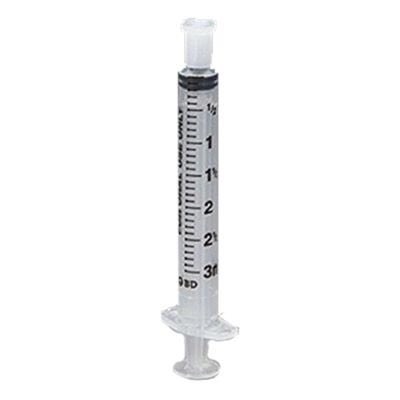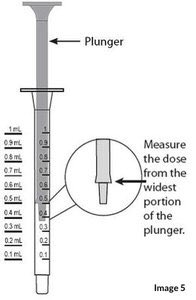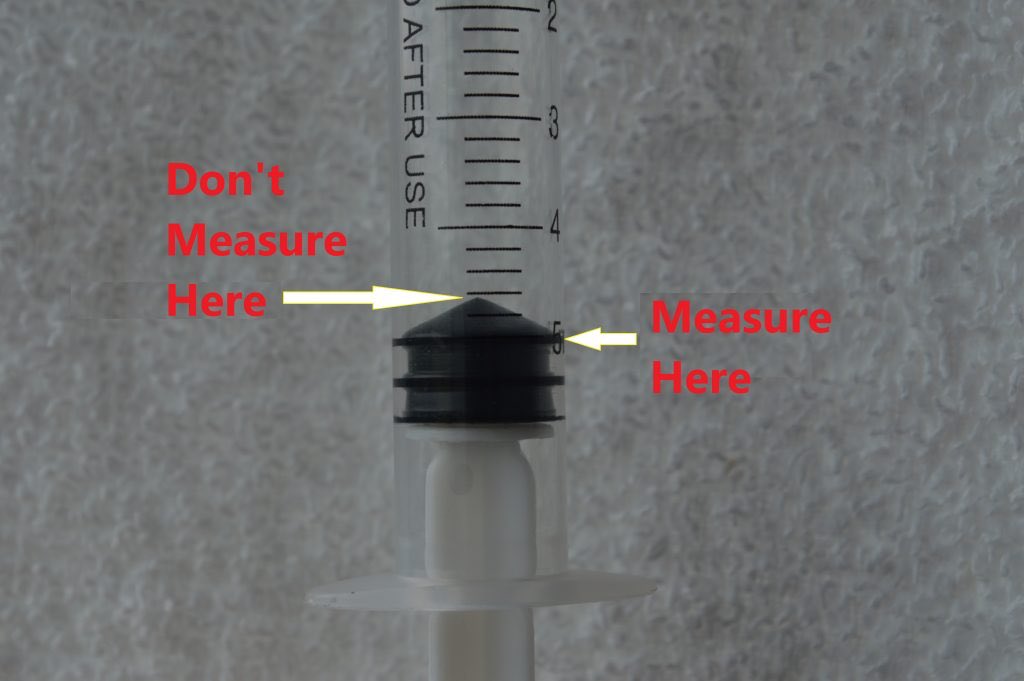Medication doses can often be rounded to the nearest mL so it’s easier for patients or families / caregivers to measure.
But! Here are some tips if you’re dealing with a medication with a narrow therapeutic range and need a precise weight-based dose...
#PedsPharm https://abs.twimg.com/emoji/v2/... draggable="false" alt="🧵" title="Thread" aria-label="Emoji: Thread"> 1/8 https://twitter.com/amygdalamd/status/1309895819106103298">https://twitter.com/amygdalam...
https://abs.twimg.com/emoji/v2/... draggable="false" alt="🧵" title="Thread" aria-label="Emoji: Thread"> 1/8 https://twitter.com/amygdalamd/status/1309895819106103298">https://twitter.com/amygdalam...
But! Here are some tips if you’re dealing with a medication with a narrow therapeutic range and need a precise weight-based dose...
#PedsPharm
For many meds, rounding within 10% of the calculated dose is okay. See if that’s an option first! In this example, 2.8 mL might be rounded to 3 mL, depending on the drug + clinical scenario.
Again, if it has a narrow therapeutic window (ex. chemotherapy), check w/ a pharmacist.
Again, if it has a narrow therapeutic window (ex. chemotherapy), check w/ a pharmacist.
Know what’s feasible.
Most 1 and 3 mL syringes are marked down to 0.1 mL. So, it’s tough to accurately measure 2.85 mL, but 2.8 mL might be possible w/ appropriate education.
Most 5, 10, or 12 mL syringes are marked down to 0.2 mL. So, 3.6 mL is easier than 3.7 mL.
3/8
Most 1 and 3 mL syringes are marked down to 0.1 mL. So, it’s tough to accurately measure 2.85 mL, but 2.8 mL might be possible w/ appropriate education.
Most 5, 10, or 12 mL syringes are marked down to 0.2 mL. So, 3.6 mL is easier than 3.7 mL.
3/8
Demonstrate appropriate technique.
Asking someone to measure a super precise dose but failing to remind them to **shake** a suspension before measuring? The patient is NOT getting the dose you intended.
4/8
Asking someone to measure a super precise dose but failing to remind them to **shake** a suspension before measuring? The patient is NOT getting the dose you intended.
4/8
Flat plunger tips may be less confusing than domed plunger tips, but with either style, it’s important to educate that it’s the TOP rubber ring that needs to be lined up with the specified dose line.
5/8
5/8
If it’s a short course of therapy (ex. 7-14 days of antibiotics), a pharmacist may be able to mark the appropriate line with a sharpie or colored tape.  https://abs.twimg.com/emoji/v2/... draggable="false" alt="🖊" title="Kugelschreiber unten links" aria-label="Emoji: Kugelschreiber unten links">
https://abs.twimg.com/emoji/v2/... draggable="false" alt="🖊" title="Kugelschreiber unten links" aria-label="Emoji: Kugelschreiber unten links">
6/8
6/8
For longer courses, the sharpie line may wash off, so I like to draw up plain water in an “example” syringe + have the caregiver practice w/ it. I’ll mark that syringe and put a cap on when they’ve measured it accurately, so they can take it home and use it as a reference later.
What other tips do you have #PedsPharm and #TwitteRx?  https://abs.twimg.com/emoji/v2/... draggable="false" alt="💡" title="Elektrische Glühbirne" aria-label="Emoji: Elektrische Glühbirne">
https://abs.twimg.com/emoji/v2/... draggable="false" alt="💡" title="Elektrische Glühbirne" aria-label="Emoji: Elektrische Glühbirne">
Let me know! @ebelarski @NeonatalPharmD @LLubsch @CFPharmD @PedsPharmD
8/8
Let me know! @ebelarski @NeonatalPharmD @LLubsch @CFPharmD @PedsPharmD
8/8

 Read on Twitter
Read on Twitter




